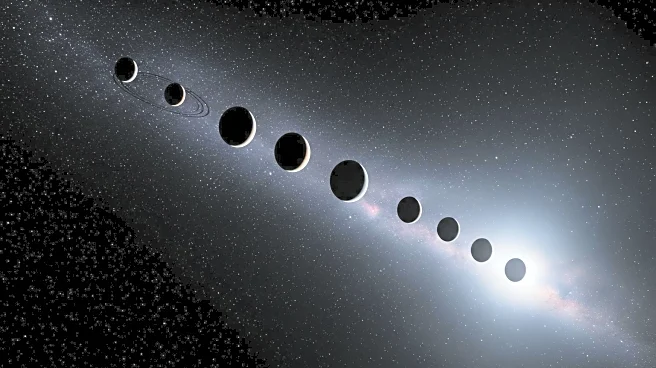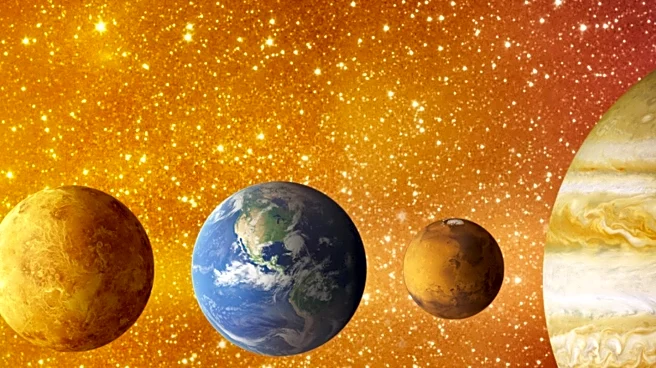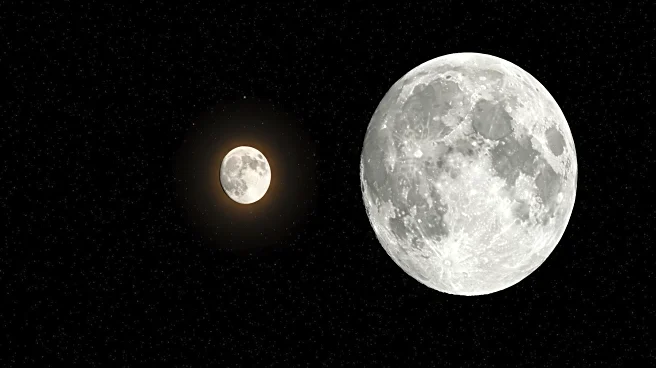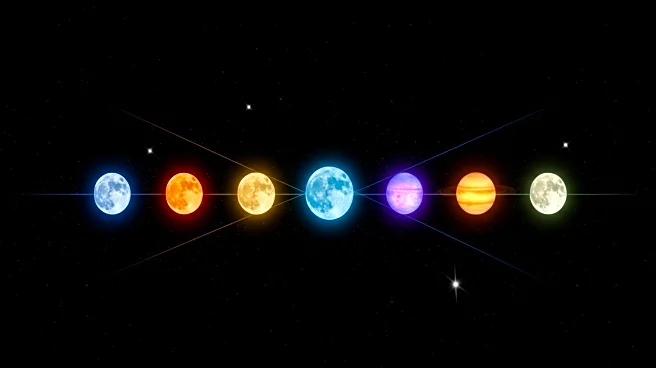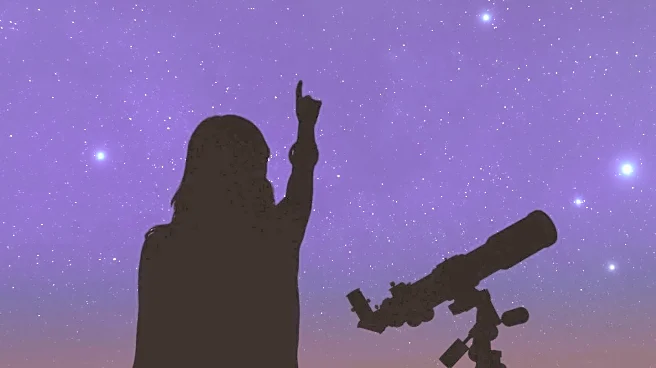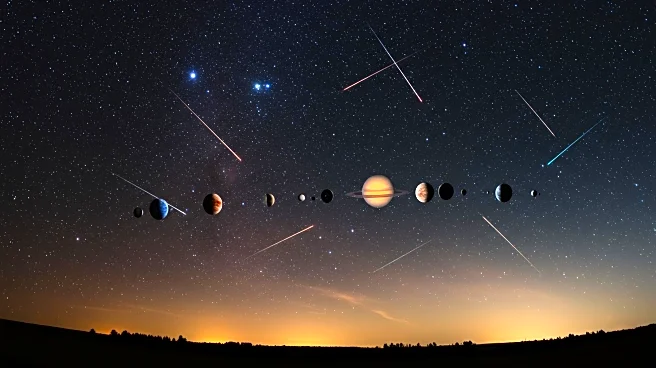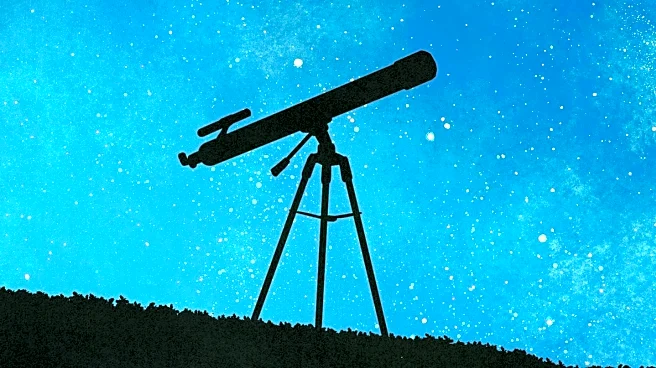Rapid Read • 8 min read
Skywatchers are in for a treat as a 'planet parade' is set to occur in the eastern sky throughout August 2025. This celestial event involves several planets appearing to align closely, forming a visible line in the sky. The brightest planets, Jupiter and Venus, are already visible and will be joined by Mercury and Saturn, along with a waning crescent moon around August 18. This alignment, while not a true alignment in the 3D solar system, offers a spectacular view from Earth. The event follows a close conjunction of Venus and Jupiter on August 12, where they appeared just one degree apart. As the month progresses, these planets will gradually separate but remain visible in the pre-dawn sky.
AD
The planet parade is significant for both amateur and professional astronomers, offering a rare opportunity to observe multiple planets simultaneously with the naked eye. Such events occur every few years and are particularly noteworthy when they include planets like Venus and Mercury, which orbit closer to the sun and are less frequently visible in such alignments. This event not only provides a chance for educational outreach and public engagement with astronomy but also highlights the dynamic nature of our solar system. For those interested in astronomy, it presents a unique opportunity to observe and study planetary movements and alignments.
The peak of this planetary alignment is expected around August 18-20, 2025, when the planets will form an arc with the waning crescent moon. Skywatchers are advised to find locations away from city lights to get the best view. The next significant planetary alignment will occur in February 2026, featuring six planets visible after sunset. These events continue to captivate the public and inspire interest in space and astronomy.
While the immediate visual spectacle of the planet parade is captivating, it also serves as a reminder of the vastness and complexity of our solar system. Such events can inspire curiosity and a deeper understanding of celestial mechanics. They also provide an opportunity for cultural and historical reflection on how different societies have interpreted and valued astronomical phenomena throughout history.
AD
More Stories You Might Enjoy


